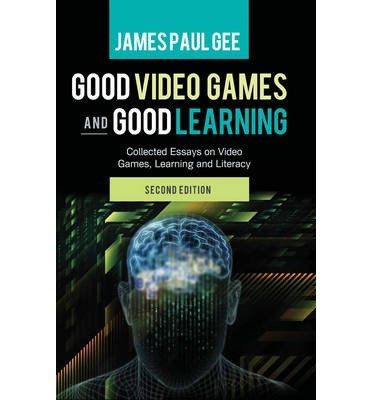e-Learning Ecologies MOOC’s Updates
Multimodal Design Considerations for Educational Games - Essential Peer Reviewed Update #3
Educational Games – particularly video games -- are being identified more frequently by educators as fertile ground for learning. Over the past decade, there has been increased emphasis on creating games which appeal to young learners while also addressing their primary academic needs. Multi-modality is said to be the mechanism by which educational games convey the material they are representing via text, sound, graphics, motion, etc.. Researchers and game designers are now likely to pair learners with gaming opportunities by virtue of their motivational states and learning preferences (Jovanovic, et. al. 2008).
The use of video gaming for educational purposes shows tremendous promise for engaging young minds. By bridging the connection between a young person’s motivational state and his learning preference, researchers aim to increase vital skills such as critical thinking, strategic thinking, executive functioning and planning skills (Jovanovic, et. al. 2008).
Video games are used for educational purposed throughout the K-16 pipeline. Such games are thought to show particular promise in a variety of disciplines including STEM. Click here for more on engaging STEM students via game based learning. http://blog.mindresearch.org/blog/11-lessons-game-based-learning-stem-fields. Other areas include ESL (academic vocabulary) and Nursing (clinical practice). Games are deeply motivating for players because they are decision makers and active problem solvers.
Dr. John Paul Gee (https://en.wikipedia.org/wiki/James_Paul_Gee), noted scholar from Arizona State University described 16 Principles of Game Based Learning for good game based learning https://www.legendsoflearning.com/blog/james-paul-gees-16-principles-for-good-game-based-learning/:
- Identity
- Interaction
- Production
- Risk-Taking
- Customized
- Agency
- Well-ordered Problems
- Challenge
- Just-in-Time or On-Demand
- Situated Meanings
- Pleasantly Frustrating
- System Thinking
- Explore, Think Laterally, Rethink Goals
- Smart Tools and Distributed Knowledge
- Cross Functional Teams
- Performance before Competence
Listen as cognitive researcher, Dr. Daphne Bavelier, helps us build upon Dr. Gee’s research to understand modern applicability of video games for learning during her recent TED Talk.
Finally, consider the benefits of game-based learning outlined in the infographic below:
For Additional Information:
https://www.usnews.com/news/stem-solutions/articles/2013/11/11/the-latest-tool-for-teaching-stem-video-games
http://blog.mindresearch.org/blog/11-lessons-game-based-learning-stem-fields
http://www.academiccolab.org/resources/documents/Good_Learning.pdf
https://www.youtube.com/watch?v=FktsFcooIG8
References:
Jovanovic, M., Starcevic, D., Stavljanin, V., & Minovic, M. (2008). Surviving the design of educational games: Borrowing from motivation and multimodal interaction. Human Systems Interaction.
Jovanovic, M., Starcevic, D., Stavljanin, V., & Minovic, M. (2008). Educational design issues: Motivation and multimodal interaction. World Summit on Knowledge Society: Emerging Technologies and Information Systems for the Knowledge Society, p. 215-224.



